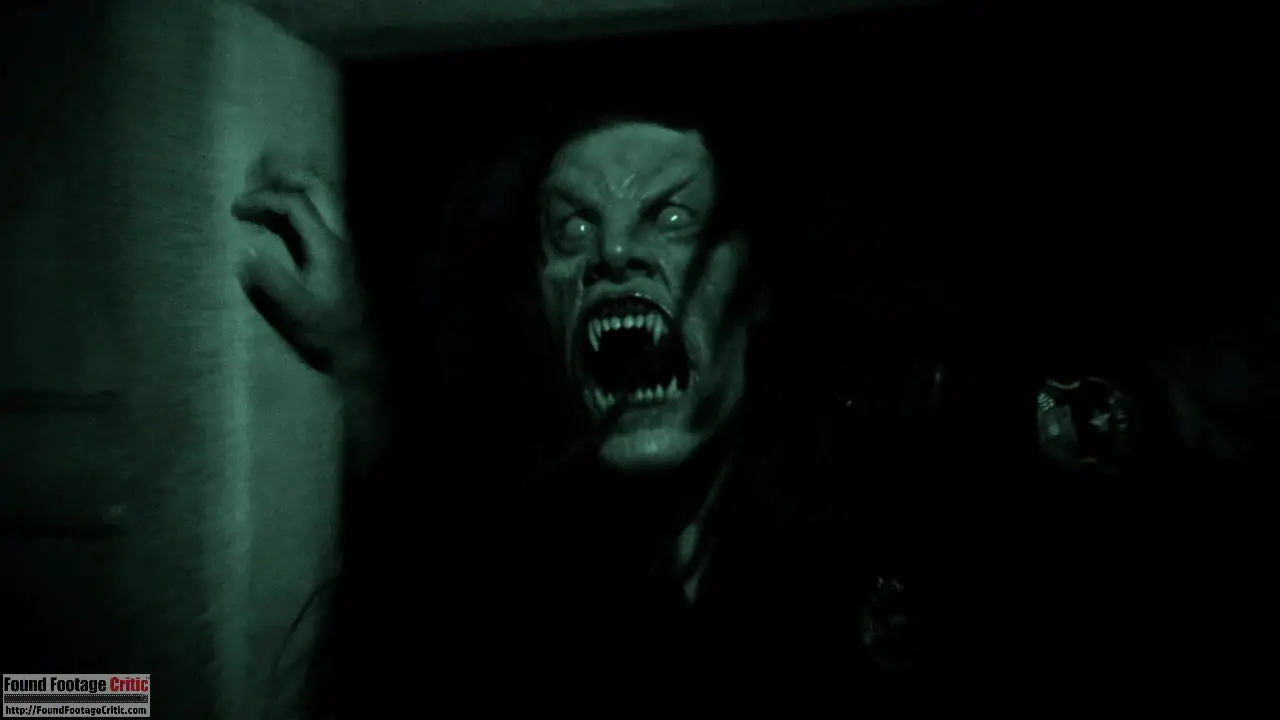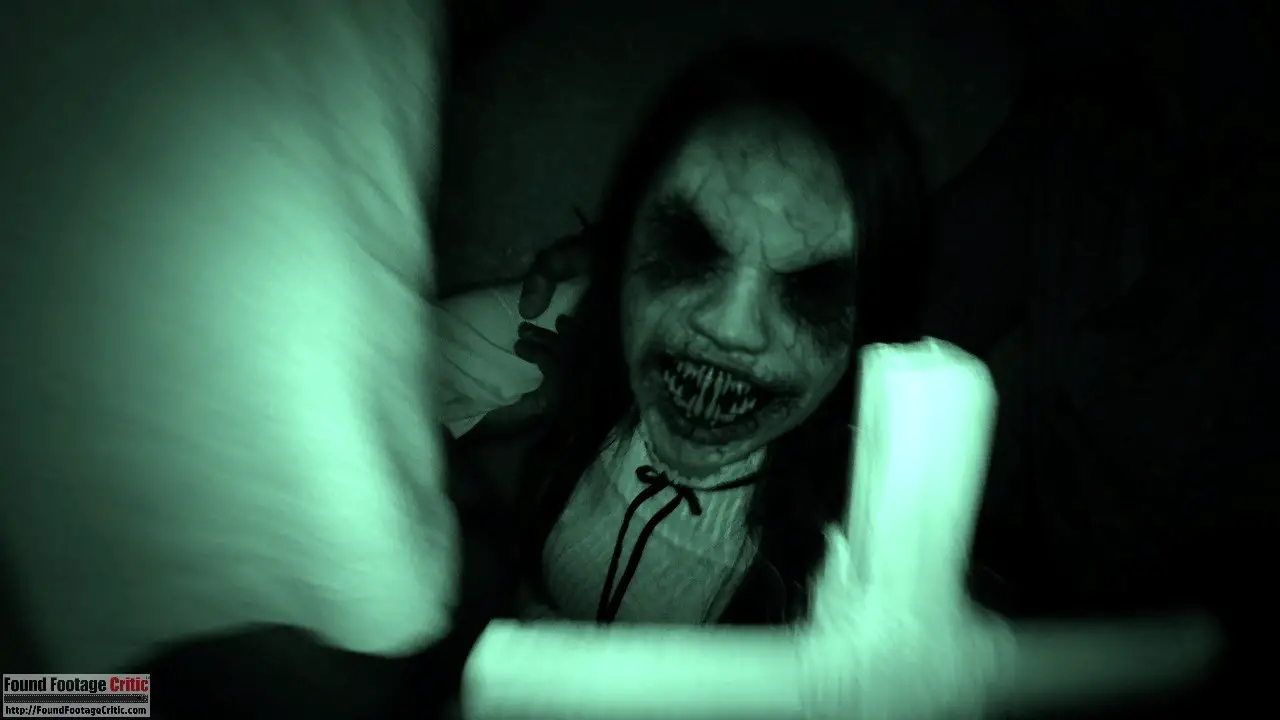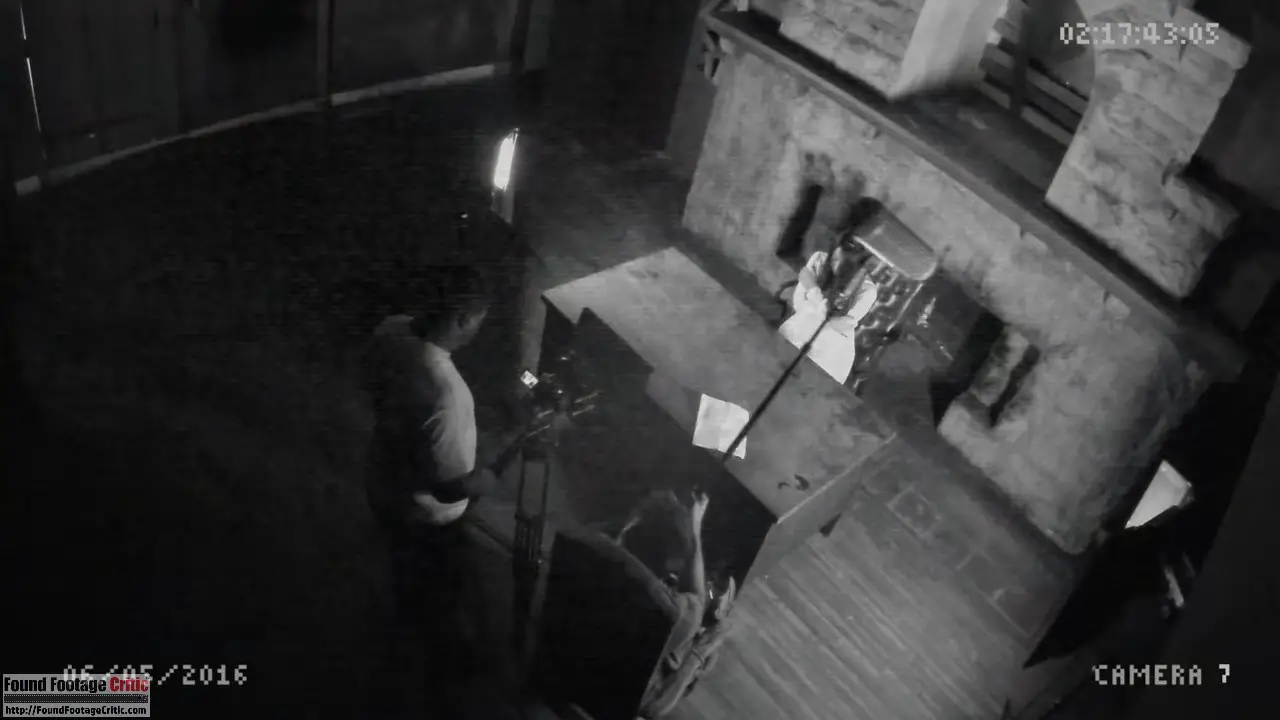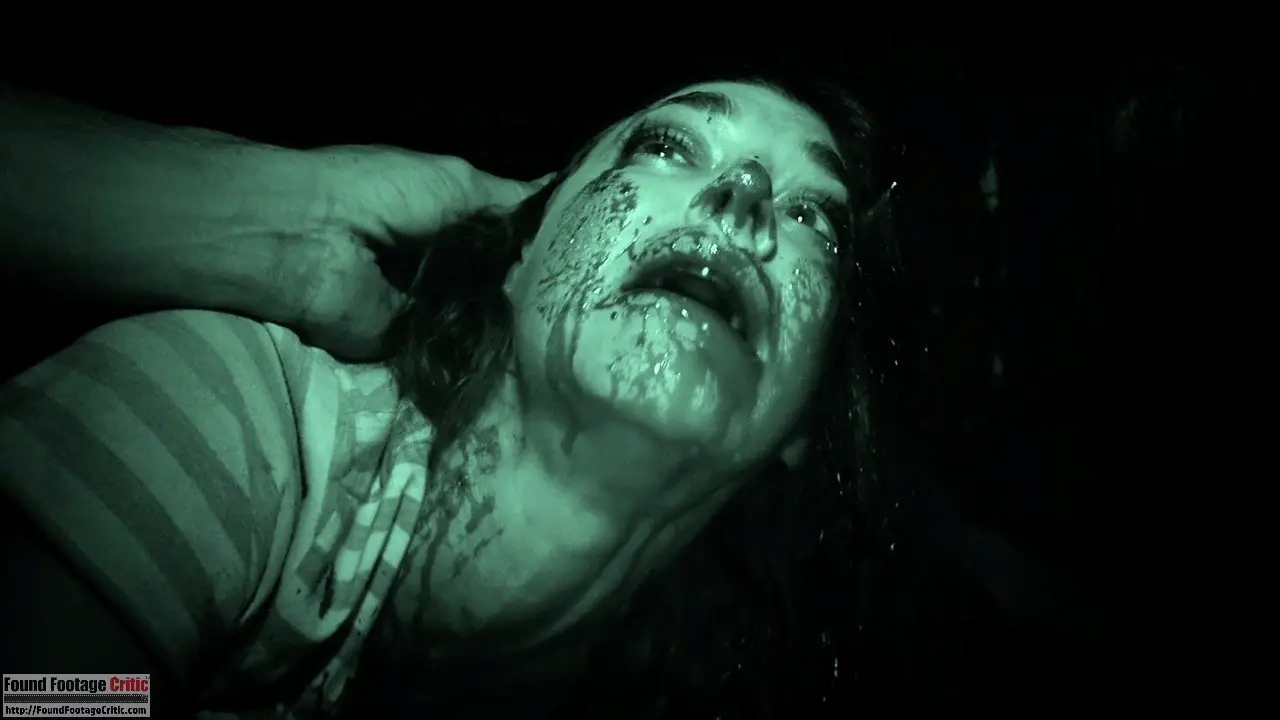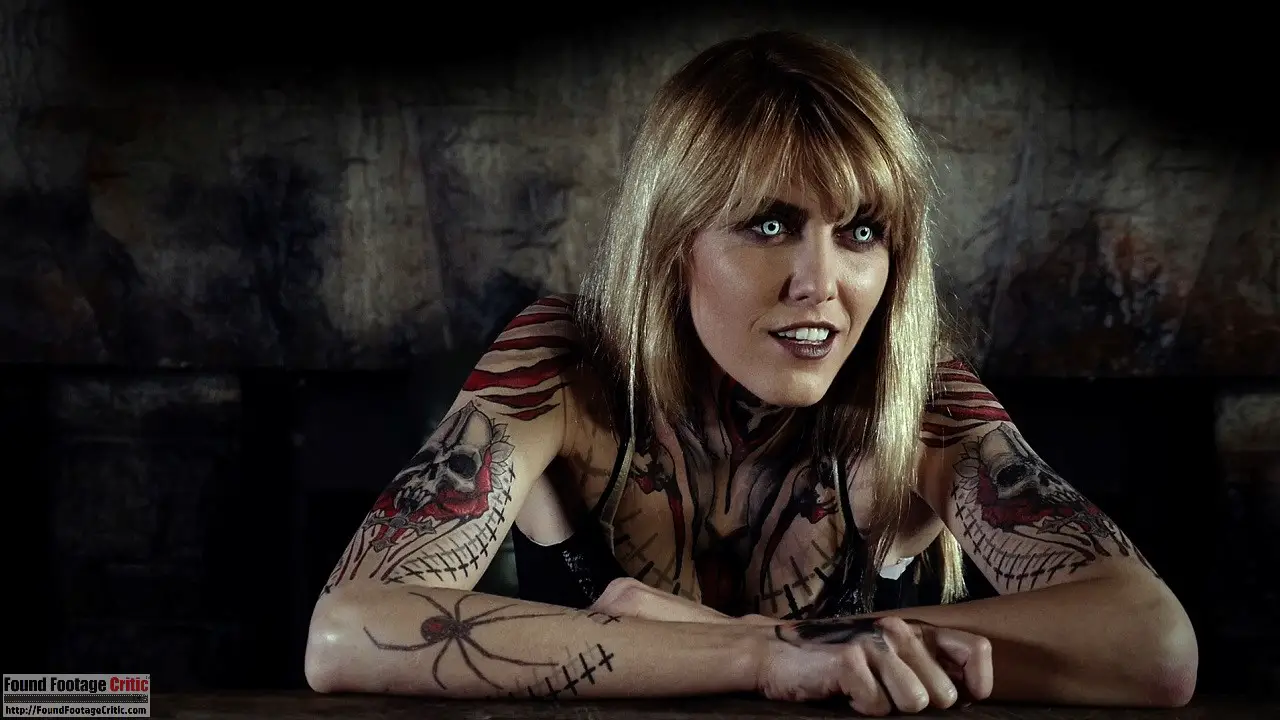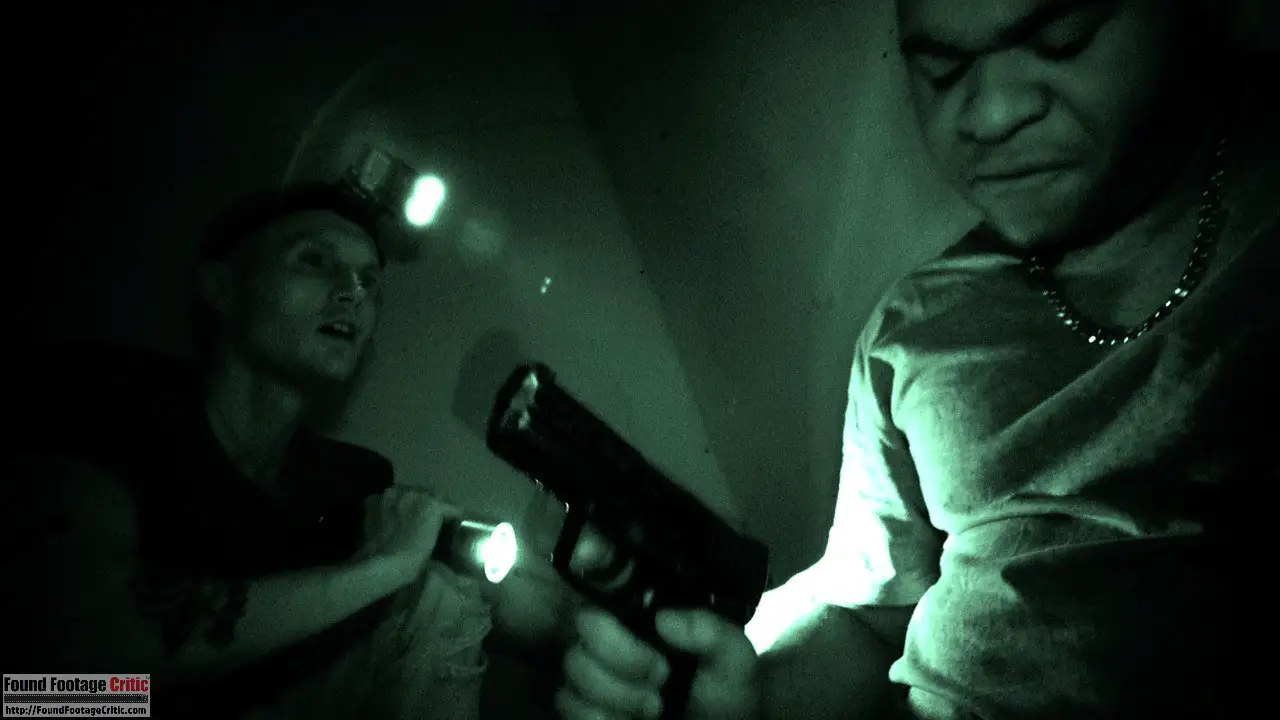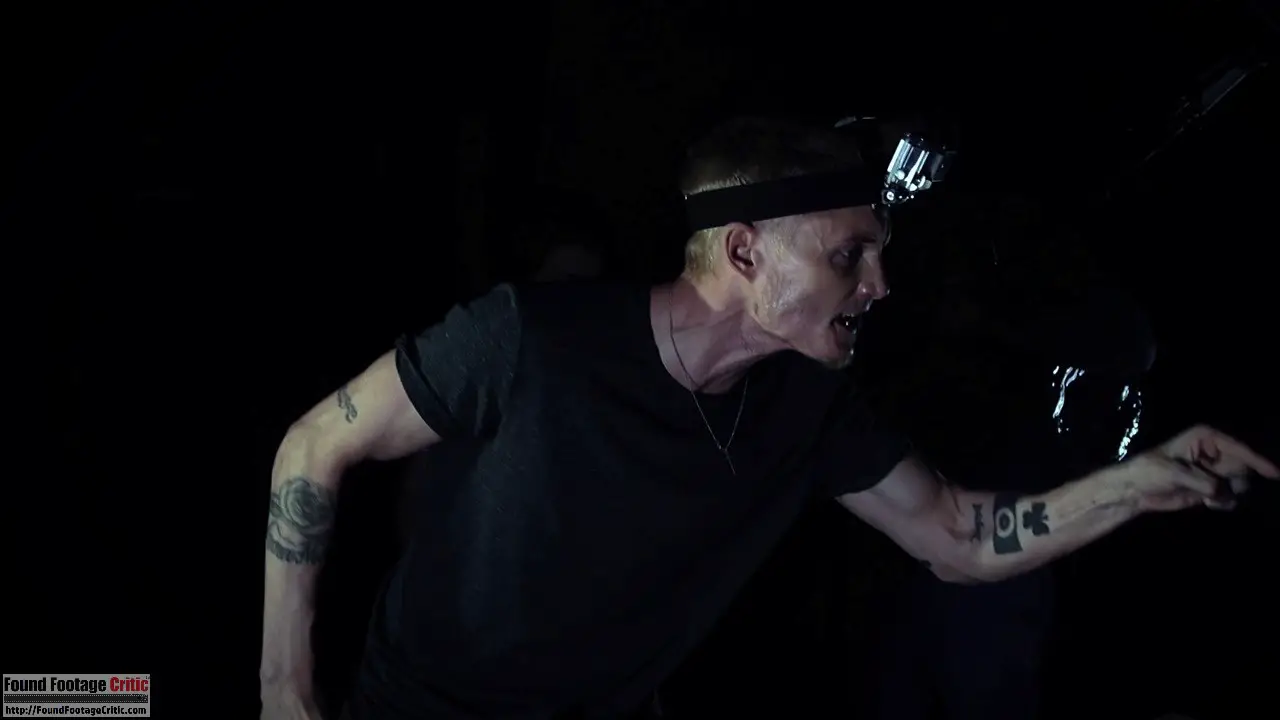The Monster Project is a found footage film directed by Victor Mathieu and written by Corbin Billings, Shariya Lynn, and Victor Mathieu. The film follows four friends who set out to create a reality based show proving that monsters are real by interviewing people who claim to be real life monsters themselves.
The Monster Project is one of several recent found footage films distributed by Epic Pictures Group. The well-regarded distributor also released the found footage horror movies Jeruzalem (2015) and The Dark Tapes (2016). Epic Picture Group’s recent interest in found footage films is a blessing to fans of the genre, who are eager to see more mid to high tier budget found footage films with high production value.
The Monster Project opens with friends Devon (Justin Bruening) and Jamal (Jamal Quezaire) shooting a film that turns out to be a short monster-themed video designed as click-bait for their Youtube channel. In an effort to take their popular Youtube channel to the next level, Devon and Jamal come up with the idea of filming a show where they search for real monsters.
…A mind-blowing adrenaline rush
To set their plan in motion, Devon posts casting a call ad on Craigslist that humorously reads, “Looking for subjects to be interviewed for a documentary titled: THE MONSTER PROJECT… If you suffer from legitimate conditions like clinical lycanthropy and Renfield’s syndrome, or believe that you are afflicted by the supernatural or paranormal, call the number below.” Surprisingly the ad works and applications start flowing in.
Next, Devon, the producer of the show, screens the candidates that will be interviewed on “The Monster Project,” which he plans to shoot in a dilapidated mansion. Not surprisingly, Devon and Jamal discover that monsters are real, but what follows next is even more horrific, totally unexpected, and a mind-blowing adrenaline rush.
The Story Behind the Story
Prior to the release of The Monster Project, director Victor Mathieu created a masterful (less than 40 minutes) web series covering events leading up to the start of the feature film. The web series focuses on Shiori, one of the main characters in The Monster Project. This prequel (of sorts) takes the form of an eleven part Youtube series posted by Shiori describing the horrific events preceding The Monster Project.
The short story explores Shiori’s backstory and explains why she answers the casting call to be interviewed on “The Monster Project” documentary. The web series offers a unique point of view than what is presented in the feature film.
Before watching The Monster Project, we strongly encourage that horror fans watch the free web series. Not only does the web series provide rich backstory, but it’s also an exceptionally crafted horror story in its own right. Again, watch the web series!
Click here to watch the full The Monster Project (2017) Web Series
Found Footage Cinematography
Director Victor Mathieu: “I banked on the idea that people would want to watch a film that had a variety of monsters”
The found footage cinematography is a measure of how accurately a film’s appearance and aesthetics come across as actual found footage. The Monster Project does an admirable job maintaining a true sense of visual realism throughout most of the picture. The footage is captured using a variety of handheld video cameras, surveillance cameras, head mounted video cameras, and a body-mounted video camera. The vast array of different cameras and use of daytime and night vision filming offers a mesmerizing variety of unique perspectives and creative visuals.
The majority of footage in The Monster Project is filmed with the main protagonist’s (Toby Hemingway) head-mounted video camera, which often creates a unique first-person shooter aesthetic, particularly during high adrenaline action sequences. We had a chance to chat with director Victor Mathieu regarding the cinematography of The Monster Project. He said, “I banked on the idea that people would want to watch a film that had a variety of monsters and that would blend the found footage genre with the 1st person POV type of filmmaking (similar to video games like Call Of Duty) to mix it up and change it up.”
Director Victor Mathieu uses a healthy blend of practical and computer generated creature and gore effects. While we usually dissuade filmmakers from using heavy CGI in a found footage film, the approach works exceedingly well in The Monster Project. The creature effects look convincingly real and the demonic possession and werewolf transformations are terrifying and creepy. In short, The Monster Project is a balls to the wall creature fest!
Filming Reason
The filming reason is often the pivot that can make or break a found footage film. The Monster Project has no shortage of action, so introducing compelling and convincing reasons as to why this footage exists in the first place is essential to convincing viewers that what they are watching is real. Director Victor Mathieu offers compelling filming reasons that span the duration of the film.
Early scenes in The Monster Project consist of interview footage and behind-the-scenes footage captured by the film crew. These staged scenes are shot convincingly as one would expect from a documentary. Most of the latter footage in the movie is captured through a combination of surveillance cameras, a head-mounted camera worn by the lead protagonist, and body-mounted camera worn by one of the monsters. The heavy reliance of these camera types, in particular, is key to the film’s success. Surveillance cameras and head/body mounted cameras record automatically without any human intervention, removing the “why are you still filming” question that often arises in many found footage films.
While most of the filming reasons are justified, the last third of The Monster Project contains many scenes where the protagonists film with handheld video cameras while in immediate physical danger. Despite their predicament, the protagonists continue filming unflinchingly. Fortunately, the breakneck speed of the latter part of the film makes asking the “why are are they still filming” question unlikely to be raised by most viewers since the story never slows down long enough to think about such things.
Found Footage Purity
The found footage purity measures how well a film presents as actual found footage. This analysis considers the cinematography, audio, special effects, acting, and a myriad of other factors. From a technical and storytelling perspective, The Monster Project is exceptionally executed on many levels but is not perfect.
One minor issue takes place in a scene where a character is filming in the desert and the video camera viewfinder and battery level indicator are recorded to video. These graphical elements are visible to the person holding the video camera but do not record. Further, the same video camera is used to record both earlier and later in the film, but the viewfinder is never present except for that one scene. While this issue may seem trivial, viewers of found footage films are far more sophisticated than ten years ago, and minor inconsistencies such as this one are often noticed.
While The Monster Project is an astonishingly well-crafted film with a unique and interesting plot, one area that deviates from the found footage approach of the film is the overt (and extreme) use of non-diegetic sound design and background music. Sound design and background music are commonplace in narratively shot films and are used to generate tension and aid in jumpscare execution. However, these audio elements do not organically fit within the construct of found footage.
We acknowledge that director Victor Mathieu indicated that his direction for this film includes the fusion of found footage and a breakneck paced first person shooter video game. However, our review system judges all found footage films objectively with unified rating criteria, which is based on the strict technical rules of the genre.
Since found footage films are designed to look (and sound) authentic, viewers are often hypersensitive to any elements that do not belong. When audio elements with no “in universe source” are introduced into an otherwise pure found footage film, these additions often stand out and pull viewers out of the moment. Ultimately, this is the case with The Monster Project.
Even with these deficiencies, The Monster Project is nonetheless a highly entertaining film. The strengths of the cinematography, creature effects, and story more than compensate for these shortfalls. But not for the non-diegetic sound and background music, The Monster Project would easily rank among our most highly rated found footage films.
Acting
Toby Hemingway is exceptional as Bryan, the soft spoken recovering drug addict who is hired to work with the documentary crew on the shooting of “The Monster Project.” When his character’s situation takes a turn for the worse, Toby Hemingway believably portrays a man who is fighting for his life, relying on faith, religion, and sheer determination to survive the night.
Murielle Zuker is outstanding as Murielle, the director of the documentary and love interest to Bryan—her exceptional performance during the chaotic finale of the film is chilling. Justin Bruening does a good job portraying Devon, the producer of The Monster Project and ex-boyfriend to Murielle. His character is a predator in disguise, surreptitiously compelling each member of the film crew to act against their better judgment, preying on their inner greed and self-interest. Jamal Quezaire admirably plays Jamal, the cinematographer on the documentary. His character provides the comedic relief, effectively lightening the mood with well-placed humor when the film needs it most.
Playing the monsters is the wonderful acting of Yvonne Zima as vampire Shayla, Shiroi Ideta as demonically possessed Shiori, and Steven Flores as skinwalker Steven. Rounding out the cast is Jim Storm as Richard, the owner of the house where the film is shot and Susan Stangl he Richard’s wife, and PeiPei Alena Yuan as the possessed form of Shiori.
Plot
On the surface, The Monster Project is about a film crew who interview three people claiming to be monsters as part of a documentary to prove that monsters are real. The interviewees include Shiori, who claims to be possessed by a demon, Shayla, a tattoo artist and professed vampire, and Steven, a police officer and purported skinwalker. The film crew shoots the show in a dilapidated house on the evening of a historical full lunar eclipse—with a setup like this, how can anything go wrong?
Once the story kicks into gear, The Monster Project is an onslaught of high octane terror!
At its core, the film is told from the perspective of character Bryan (Toby Hemingway), a recovering drug addict. He relies on religion as the source of his strength and inspiration to resist the temptation to abuse drugs. Bryan is a man tortured with paralyzing guilt over the consequences of his poor decision making while under the influence of drugs earlier in his life.
While working on “The Monster Project” documentary, Bryan quite literally confronts his inner demons. His fight against drugs is brilliantly juxtaposed with a real-world fight against supernatural forces. This subtext introduces an additional layer of depth to the narrative.
We had an opportunity to ask director Victor Mathieu what his influences were for The Monster Project. Here is what he had to say, “There was a film by the Butcher Brothers called ‘The Hamiltons (2006)’ that I quite liked, I just remember liking the idea of a family of vampires living together, and I remember thinking how cool it would be to make a film about a documentary film crew that goes in to interview a family of vampires. But then, my love of monsters (from Goosebumps primarily) kicked in, and I decided to make a film about a documentary crew that interviews various types of monsters.”
Once the story kicks into gear, The Monster Project is an onslaught of high octane terror! If background music in found footage does not bother you, add another point to our rating. The Monster Project will have a limited theatrical release in U.S. theaters and global VOD release on Friday, August 18th.

